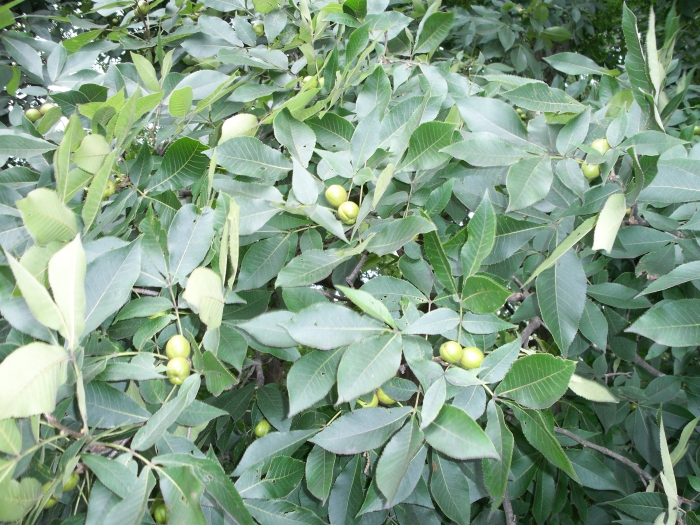Shagbark Hickory
(Carya ovata)
Shagbark Hickory (Carya ovata)
/
/

EgorovaSvetlana
CC BY-SA 4.0


















































































Estimated Native Range
Summary
Shagbark Hickory is valued for its hard, dense wood and the nuts it produces, which are enjoyed by both wildlife and humans. Its deep taproots make it resistant to windthrow, and it is often used in rural plantings and naturalized areas. The tree is also tapped like maples for syrup. It requires full sun to part shade and can adapt to a range of soil drainage conditions, from well-drained to occasionally wet soils. While it is not commonly used in urban settings due to its large size and slow growth, it is a valuable addition to larger landscapes and restoration projects. Care should be taken when planting Shagbark Hickory as it can suffer from pests such as the Hickory Bark Beetle and diseases like fungal leaf infections.CC BY-SA 4.0
Plant Description
- Plant Type: Tree
- Height: 70-80 feet
- Width: 50-70 feet
- Growth Rate: Slow
- Flower Color: N/A
- Flowering Season: Spring
- Leaf Retention: Deciduous
Growth Requirements
- Sun: Full Sun, Part Shade
- Water: Medium
- Drainage: Fast, Medium, Slow
Common Uses
Bee Garden, Bird Garden, Butterfly Garden, Deer Resistant, Drought Tolerant, Edible*Disclaimer: Easyscape's listed plant edibility is for informational use. Always verify the safety and proper identification of any plant before consumption., Fire Resistant, Fragrant
Natural Habitat
Deciduous forests of the Eastern United States and southeast Canada, particularly thriving in rich, moist bottomlands and dry uplands
Other Names
Common Names: Caryer Ovale , Noyer Tendre , Shellbark Hickory , Upland Hickory , Schindelborkige Hickorie , Schuppenrindenhickory , Caria Blanca , Carya Blanc , Noyer Blanc , Arbre À Noix Piquées
Scientific Names: Carya ovata , Juglans ovata , Carya ovata var. mexicana , Carya ovata var. pubescens , Hicoria ovata , Carya mexicana , Carya mexicana f. polyneura , Hicoria carolinae-septentrionalis , Carya ovata var. ellipsoidalis , Carya ovata var. fraxinifolia
GBIF Accepted Name: Carya ovata (Mill.) K.Koch